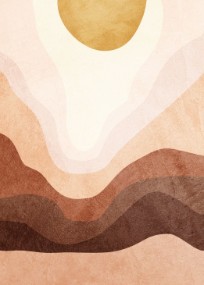The acronym, which stands for black, Indigenous and people of color, is suddenly everywhere. Is it doing its job?
YOU MIGHT ALSO LIKE
CLEAR ALL
BY TOPIC
BY TEACHER
BY TYPE
FILTER

TOPIC
- Identity (23)
- Racial Identity (23)
- Speaking Your Truth (23)
- Community Healing (22)
- Well-Being (22)
- LGBTQIA Well-Being (20)
- Cross-Cultural Dynamics (18)
- Emotional and Mental Health (18)
- Latinx Well-Being (17)
- Women’s Well-Being (15)
- Trauma Healing (14)
- AAPI Well-Being (13)
- Empowerment (13)
- Racial Healing (13)
- Racial Justice (12)
- Activism/Service (11)
- Fellowship and Community (11)
- Authenticity (10)
- Coming Out (10)
- Intergenerational Trauma (10)
- Race and Gender (10)
- Athlete Well-Being (9)
- Connection with Nature (9)
- Generational Healing (9)
- Social Justice (9)
- Whiteness (9)
- Belonging (8)
- Creative Well-Being (8)
- Indigenous Healing Approaches (8)
- Nonbinary Well-Being (8)
- Resilience (8)
- Immigration and Assimilation (7)
- Racial Discrimination (7)
- Transgender Well-Being (7)
- Cross-Cultural Parenting (6)
- Happiness (6)
- Identity Shifts (6)
- Indigenous Rights (6)
- Native American Beliefs (6)
- Self-Limiting Beliefs (6)
- Self-Worth (6)
- Disabled Well-Being (5)
- Environmental Justice (5)
- Imagination and Creativity (5)
- Physical Health (5)
- Search for Purpose (5)
- Self-Acceptance (5)
- Self-Discovery (5)
- Social Responsibility (5)
- Young Adult Well-Being (5)
- ADD/ADHD (4)
- Climate Change (4)
- Communication Skills (4)
- Diet and Nutrition (4)
- Faith and Identity (4)
- Hero’s Journey (4)
- Honoring Emotion (4)
- Imposter Syndrome (4)
- Neurodiversity (4)
- Self-Esteem (4)
- Self-Expression (4)
- Self-Healing (4)
- Unconscious Bias (4)
- Veteran Well-Being (4)
- Christianity (3)
- Compassion (3)
- Entrepreneurship (3)
- Exercise (3)
- Family Dynamics (3)
- Finding Meaning (3)
- Gender Identity (3)
- Healthy Eating (3)
- Mindfulness (3)
- Mindfulness Practices (3)
- Motherhood (3)
- Parenting (3)
- Sleep (3)
- Somatic Practices (3)
- Spirituality and Politics (3)
- Stress Management (3)
- Sustainability (3)
- Values (3)
- Vulnerability (3)
- Work Challenges (3)
- Work-Life Balance (3)
- Acceptance (2)
- Access to Education (2)
- Aging (2)
- Autism (2)
- Body Image (2)
- Breathwork (2)
- Buddhism (2)
- Building Culture (2)
- Cancer (2)
- Collective Trauma (2)
- Connection (2)
- Courage (2)
- Criticism and Rejection (2)
- Economic Justice (2)
- Family Acceptance (2)
- Female Empowerment (2)
- Freedom (2)
- Generosity (2)
- Gratitude (2)
- Growth Mindset (2)
- Habits of Mind (2)
- Hope (2)
- Inspiration (2)
- Islamophobia (2)
- Kindness (2)
- Letting Go (2)
- Meditation (2)
- Mind-Body Connection (2)
- Neuroscience (2)
- Offering Support to Others (2)
- Othering (2)
- Personal Development (2)
- Positive Thinking (2)
- Poverty/Economic Inequality (2)
- Relationship with Money (2)
- Retirement (2)
- Ritual (2)
- Self-Actualization (2)
- Self-Development (2)
- Self-Love (2)
- Self-Reliance (2)
- Talk Therapy (2)
- Transitions (2)
- Trust (2)
- Women’s Rights (2)
- Yoga (2)
- Adaptability (1)
- Addiction (1)
- Addiction Recovery (1)
- Adoption (1)
- AIDS (1)
- Alcohol Addiction (1)
- Anger (1)
- Anxiety (1)
- Asking for Help (1)
- Body Mapping (1)
- Cannabis/CBD (1)
- Caregiver Well-Being (1)
- Child’s Emotional Growth (1)
- Children’s Well-Being (1)
- Cognitive Behavioral Therapy (1)
- Collaboration (1)
- Compassion Meditation (1)
- Curiosity (1)
- Death or Loss of a Loved One (1)
- Decision Making (1)
- Depression (1)
- Digital Life (1)
- Discrimination (1)
- Drug Addiction (1)
- Fear (1)
- Feminism (1)
- Financial Instability (1)
- Forest Bathing (1)
- Forgiveness (1)
- Friendship (1)
- Global Challenges (1)
- Grace (1)
- Grief (1)
- Guilt (1)
- Homophobia (1)
- Humanitarian Aid/Relief Work (1)
- Humility (1)
- Illness and Injury (1)
- Incarceration (1)
- Integrative Medicine (1)
- Integrity (1)
- Intuition (1)
- Jewish Renewal (1)
- Journaling (1)
- Learning Styles (1)
- Leaving a Religion (1)
- LGBTQIA Relationships (1)
- Loneliness (1)
- Longevity (1)
- Loss of Partner/Spouse (1)
- Lovingkindness Meditation (1)
- Managing Energy (1)
- Mantra Meditation (1)
- Men’s Well-Being (1)
- Mental Health Challenges (1)
- Military to Civilian Re-entry (1)
- Mindfulness Meditation (1)
- Motivation (1)
- Neuroplasticity (1)
- Optimism (1)
- Patience (1)
- Perception (1)
- Performance Anxiety (1)
- Pleasing Parents (1)
- Pregnancy and Childbirth (1)
- Productivity (1)
- PTSD (1)
- Raising Sons (1)
- Relationship Challenges (1)
- Relationship with Time (1)
- Rest (1)
- Self-Realization (1)
- Self-Reckoning (1)
- Self-Reflection Practices (1)
- Setting Limits and Boundaries (1)
- Shadow (1)
- Shame (1)
- Social Presence (1)
- Social Psychology (1)
- Soul Mission (1)
- Sound Healing (1)
- Spiritual Growth (1)
- Spiritual Healing (1)
- Spiritual Life (1)
- Spirituality and Health (1)
- Stress (1)
- Tarot (1)
- Transformation (1)
- Trauma-Informed Therapy (1)
- Traumatic Grief (1)
- Unity (1)
- Veganism (1)
- Wake-Up Calls (1)
- Weight Concerns (1)
FILTER

TEACHER
- Lama Rod Owens (2)
- Muhammad Ali (2)
- Richard Davidson (2)
- Rick Hanson (2)
- traci ishigo (2)
- Tsering Dolma Gyaltong (2)
- William Barber (2)
- Agnes Baker-Pilgrim (1)
- Allison Briscoe-Smith (1)
- Amy Morin (1)
- Arisika Razak (1)
- Beatrice Long Visitor Holy Dance (1)
- Byron Katie (1)
- Connie Zweig (1)
- Deepak Chopra (1)
- don Miguel Ruiz (1)
- Elisa Shankle (1)
- Esperanza Spalding (1)
- James Baldwin (1)
- Jan Willis (1)
- Jenée Johnson (1)
- Joan Chittister (1)
- Jonathan Van Ness (1)
- Joseph M. Marshall III (1)
- Kamilah Majied (1)
- Kareem Abdul-Jabbar (1)
- Kishshana Palmer (1)
- LaRayia Gaston (1)
- Larry Ward (1)
- Light Watkins (1)
- Maria Alice Campos Freire (1)
- Mark Manson (1)
- Martin Luther King Jr. (1)
- Maya Breuer (1)
- Monnica Williams (1)
- Naomi Shihab Nye (1)
- Nicole Cardoza (1)
- Oprah Winfrey (1)
- Panache Desai (1)
- Rita Pitka Blumenstein (1)
- Ruth King (1)
- Serena Williams (1)
- Sharon Brous (1)
- Stephanie Y. Evans (1)









